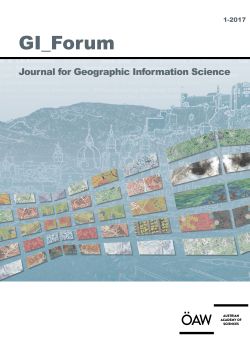
GI_Forum 2017, Volume 5, Issue 1, pp. 327-340, 2017/06/30
Journal for Geographic Information Science

Heat stress is a serious risk, which affects groups such as the elderly or patients with chronic diseases in particular, and is especially pronounced in cities. The ageing of society, progressive urbanization and climate change are increasing the risk of people being affected by heat stress. One way to reduce the risk is to adapt everyday behaviour. To encourage and support such a change of behaviour, we propose a two-step approach. The first step is a route planner for pedestrians which can find a route with minimal heat exposure. The second step is a tool that helps the user to select the time of day with minimal heat exposure to venture outside. The route planner is then used to calculate the heat stress and present the optimal route at that point in time. We evaluate our approach for the city of Karlsruhe. Our results show that the combined approach, as well as its individual steps, can reduce heat exposure and therefore the heat stress for typical daily tasks in a European city.
Keywords: heat stress, time dependent routing, decision support, urban vulnerability